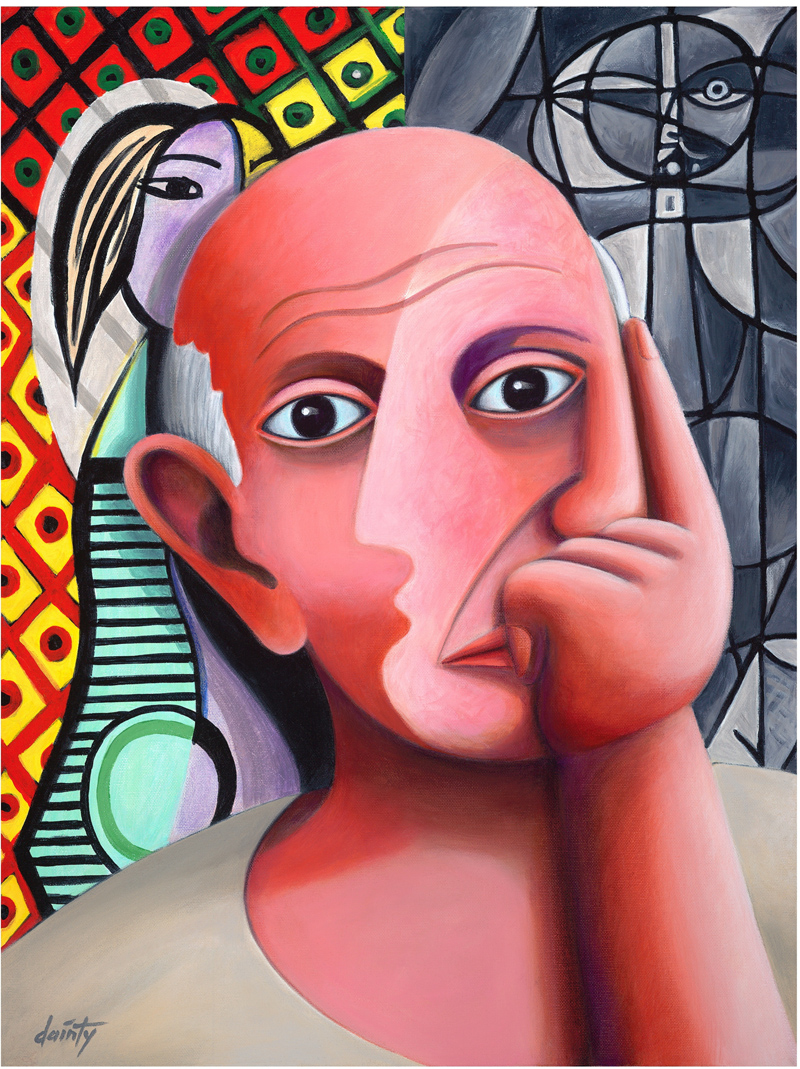
The Art of
Jackson Dainty
![]()
![]()
![]()
![]()
![]()
![]()
![]()


Pablo Picasso
Fine art Giclee print Inquire about originals
18"x24"
After a number of contemplations on the man I believe I figured out why he was compelled to paint a face on a face on figures throughout his career. It was because he himself was two faced. All art is an expression on the inner content of the soul of the artist. At any rate, the muse has no moral standard, and the personal behavior of many artists have shocked society since the beginning of time. Picasso was a master shocker. Here's a short rundown on the evolution of my Picasso piece:
The area behind Picasso on the right side is from a painting named Seated Woman. It was painted in Paris, May 28th, 1946. I was doing a contemplation one morning and a voice said 1946. That's all, just 1946. When I got up and turned on the radio the first thing that I heard was the temperature at the present time is 46 degrees. I ran to my Picasso book and found the painting, Seated Woman, from 1946, which became the upper right of the painting.
Behind Picasso on the left side is a portion of a painting named Girl Before a Mirror. Painted at Boisgelong, March 14, 1932. I like it's color, his diamond pattern behind her, which he used in many of his works over the years; and the connection that the audience will make to it because this is a very familiar piece.
My concept of Pablo Picasso is a parody of his style. A face within a face. He also rearranged the anatomy of the faces he painted with the nose on the side and uneven eyes. Picasso tore down and rebuilt everything he painted just like he tore down and rebuilt all the important relationships in his stormy life.
Why a Master
The story is told that Picasso liked to stroll on the beach, drawing lines in the wet sand, so that the next wave would wash the lines away. It was his tribute to the eternity of art.
Picasso changed his style completely seven times in his long career. He gave us three dimensions in two and three dimensional sculpture that pointed the way to the fourth. Three decades after he left this life, Picasso is still pointing the way.










